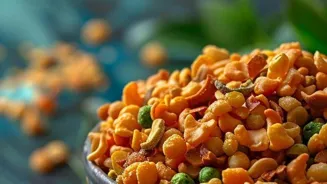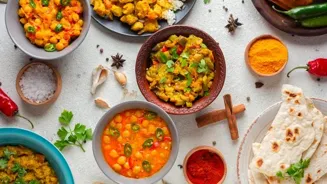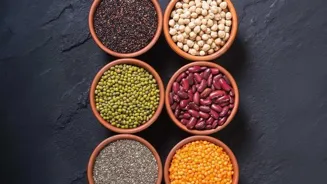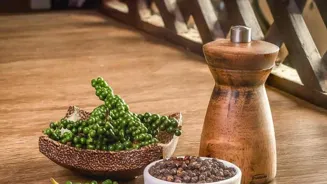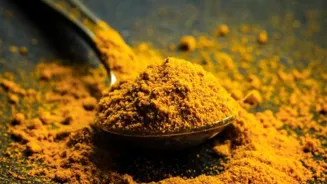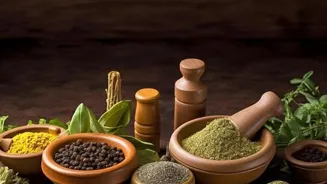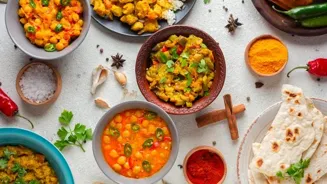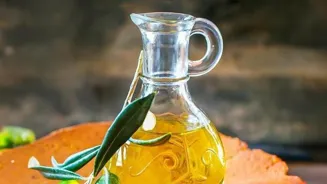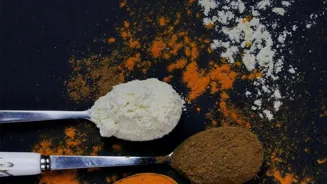Unlock the secrets to perfect dal: creamy, flavorful, and satisfying. Dive into the art of dal-making!
Dal, a staple in nearly every Indian household, is more than just a lentil soup; it's comfort food,
a nutritional powerhouse, and a blank canvas for culinary creativity.
But achieving that perfect bowl of dal, the one that’s creamy, flavorful, and deeply satisfying, can sometimes feel like a culinary challenge. Fear not, fellow food lovers!
This guide will unlock the secrets to mastering the art of dal-making, ensuring a consistently delicious and heartwarming experience.
Select fresh lentils, rinse well, soak, cook for perfect dal
The foundation of any great dal lies in the quality of ingredients and the preparation. Begin by selecting fresh, good-quality lentils. Different varieties of dal offer distinct flavors and textures, from the mild toor dal to the creamy urad dal and the earthy masoor dal.
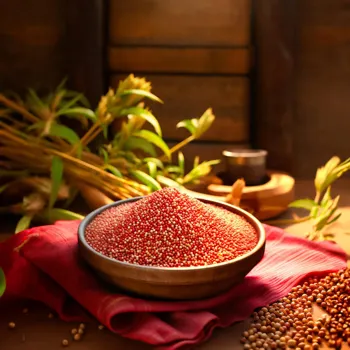
Experiment with different types to discover your favorites. Crucially, always rinse the lentils thoroughly under cold, running water until the water runs clear. This step removes any dirt, debris, and excess starch, preventing the dal from becoming overly thick and sticky during cooking.
Soaking the lentils for at least 30 minutes, or even longer, can further improve the texture and reduce cooking time. Soaked lentils cook more evenly and break down more easily, resulting in a smoother, creamier consistency. It also helps in better digestion.
Remember, a good start is half the battle won.
Choose stovetop or pressure cooker for optimal flavor when cooking dal
The choice of cooking method can significantly impact the final result. While a pressure cooker is a convenient option for busy weeknights, simmering the dal in a pot on the stovetop allows for greater control over the cooking process and flavor development.
With the stovetop method, you can gently coax out the flavors of the lentils and spices, resulting in a richer, more nuanced taste. When using a pressure cooker, be mindful of the water ratio and cooking time to avoid overcooking or burning the dal.
For stovetop cooking, start with a generous amount of water, enough to cover the lentils completely, and add more as needed during cooking to maintain the desired consistency.
No matter which method you choose, be sure to keep a close eye on the dal, stirring occasionally to prevent it from sticking to the bottom of the pot. Slow cooking is also good idea.
Tempering elevates dal with aromatic spices for rich flavor
The magic of dal truly unfolds with the addition of aromatics and spices. The "tadka," or tempering, is a quintessential step in Indian cooking that elevates the flavor profile of dal to new heights. Start by heating ghee or oil in a small pan.
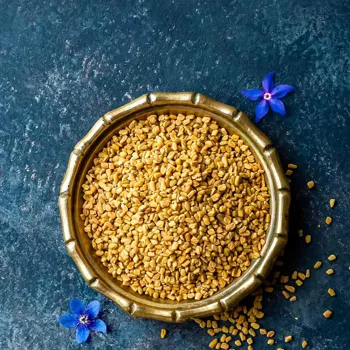
Ghee, clarified butter, adds a rich and nutty flavor, while oil offers a lighter alternative. Once the ghee or oil is hot, add a combination of spices such as cumin seeds, mustard seeds, asafoetida (hing), and dried red chilies.
Allow the spices to sizzle and release their aroma, then add chopped onions and garlic. Sauté the onions and garlic until they turn golden brown, then add ginger and green chilies for an extra kick of flavor. Finally, add tomatoes and cook them until they soften and release their juices.
This flavorful mixture, the tadka, is then poured over the cooked dal, infusing it with a burst of aroma and taste.
Enhance dal with salt, turmeric, lemon for balanced flavor
Salt is a critical ingredient in dal, enhancing the natural flavors of the lentils and spices. Add salt gradually during cooking, tasting as you go, to avoid oversalting. A pinch of turmeric powder not only adds a vibrant yellow color but also offers health benefits.
A squeeze of lemon juice or a sprinkle of amchur powder (dried mango powder) at the end can add a touch of brightness and acidity, balancing the richness of the dal.
Remember, the key to a well-seasoned dal is to taste and adjust the seasoning until it reaches your desired level of saltiness and acidity. Every lentil have its specific requirement of salt. Some lentils take more of salt and require tasting and adding in portions.
Achieve perfect dal consistency for a satisfying experience
Achieving the perfect consistency is crucial for a truly satisfying dal experience. Some prefer a thick and creamy dal, while others prefer a thinner, soupier version.
To thicken the dal, you can use a spoon to mash some of the lentils against the side of the pot, releasing their starch and creating a creamier texture. Alternatively, you can use a hand blender or immersion blender to partially blend the dal, achieving a smooth and velvety consistency.
To thin the dal, simply add more water or vegetable broth, stirring until it reaches your desired consistency. Remember, the consistency of dal can change as it cools, so it's best to adjust it while it's still hot.
Dal is a versatile dish with endless possibilities for customization
Dal is a remarkably versatile dish. It can be served as a main course with rice or roti, as a side dish to complement other Indian dishes, or even as a soup. The possibilities are endless.
You can garnish your dal with fresh cilantro leaves, a dollop of yogurt, or a drizzle of cream for an extra touch of flavor and presentation.
Some popular variations of dal include dal makhani (a rich and creamy black lentil dal), chana dal (a flavorful split chickpea dal), and moong dal (a light and easily digestible yellow lentil dal).
Experiment with different recipes and combinations of lentils and spices to discover your own signature dal. With a little practice and experimentation, you can master the art of dal-making and create a dish that is both delicious and deeply comforting.
AI Generated Content. Glance/InMobi shall have no liability for the content